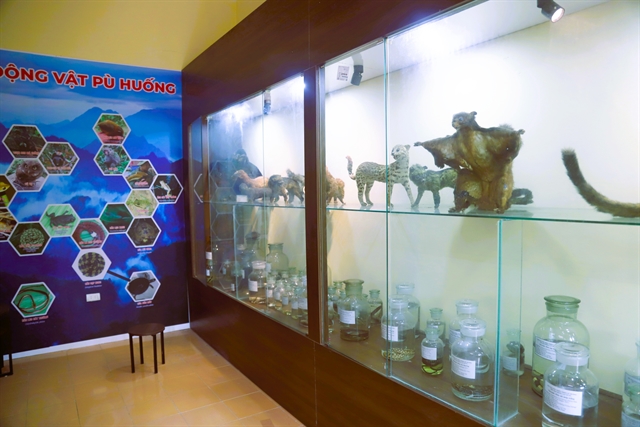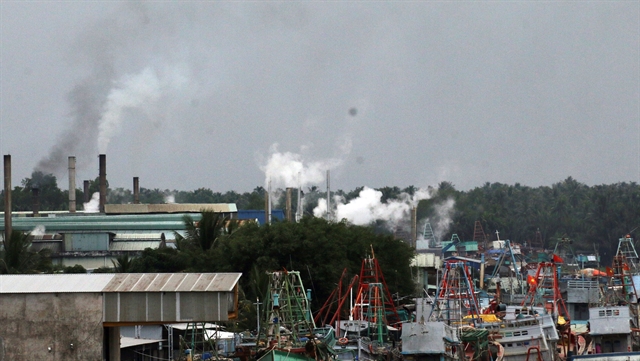 Environment
Environment

 |
| Gases rising from a factory in Kiên Giang, early 2021. — VNA/VNS File Photo |
HÀ NỘI — The Paris Agreement requires a detailed breakdown of emissions inventory data in various sectors such as energy, agriculture, land use, forestry, waste management and industrial processes. Countries are gradually required to control at least 85 per cent of the total national emissions from sources within the scope of these sectors.
The determination of the inventory areas provides a basis for ministries, sectors, localities, and businesses to review and enhance existing databases to meet the demand for sector-specific greenhouse gas inventories.
Nguyễn Tuấn Quang, deputy director of the Climate Change Department, Ministry of Natural Resources and Environment (MONRE), stated that, according to the regulations in Government Decree 06/2022/NĐ-CP on reducing greenhouse gas emissions and protecting the ozone layer, facilities listed in the inventory must establish and submit greenhouse gas inventory reports to competent authorities for assessment and emission monitoring.
Therefore, establishing and operating an online facility-level greenhouse gas inventory reporting system is crucial. This is also a significant challenge for Việt Nam due to limitations in awareness and technical capacity at facilities and local levels.
Việt Nam has strongly committed to achieving net-zero emissions by 2050. MONRE has drafted a decision for the Prime Minister to issue an updated inventory of sectors and facilities required to conduct greenhouse gas inventories.
The total number of facilities listed in the updated inventory is 2,893 (an increase of 981 facilities, a 51.3 per cent increase compared to 2022), estimated to account for approximately 34.5 per cent of the total national greenhouse gas emissions. These are facilities with high greenhouse gas emissions in all sectors that need strict management of emissions, implementing emission reduction activities from now until 2030, playing a crucial role in achieving emission reduction targets set by the nation by 2030.
In the manufacturing and industry sector, there are 2,261 facilities, including power plants and industrial facilities with annual energy consumption of 1,000 TOE or more (an increase of 599 facilities compared to 2022).
In the transportation sector, there are 81 facilities, including freight transport businesses reviewed by the Ministry of Transport, proposed to be included in the inventory, with total annual energy consumption of 1,000 TOE or more (an increase of 11 facilities compared to 2022).
In the construction sector, there are 140 facilities, including cement production companies and commercial buildings with annual energy consumption of 1,000 TOE or more (an increase of 36 facilities compared to 2022).
In the resource and environment sector, there are 70 facilities processing solid waste with annual operating capacity of 65,000 tonnes or more (a decrease of six facilities compared to 2022).
The agriculture and rural development sector has 341 facilities operating in livestock farming with estimated annual greenhouse gas emissions of 3,000 tonnes of CO2 equivalent or more.
MONRE stated that, currently, the agriculture and rural development sector of Việt Nam, especially the livestock farming sector, has recovered strongly after the COVID-19 pandemic, occupying an increasingly significant proportion of the total national greenhouse gas emissions. However, the inventory in Decision 01/2022/QĐ-TTg does not include these facilities in this sector.
To achieve the goal of managing greenhouse gas emissions for the entire economy, the addition of facilities in the agriculture and rural development sector to those required to conduct greenhouse gas inventories is appropriate.
The issuance of an updated inventory of sectors and facilities required to conduct greenhouse gas inventories by the Prime Minister is essential to implement the provisions of the Environmental Protection Law, and contribute to the effective implementation of the Party's resolutions, the State's policies on coping with climate change, and reducing greenhouse gas emissions. It also demonstrates the efforts of the Vietnamese Government in fulfilling international commitments on climate change. — VNS




.jpg)